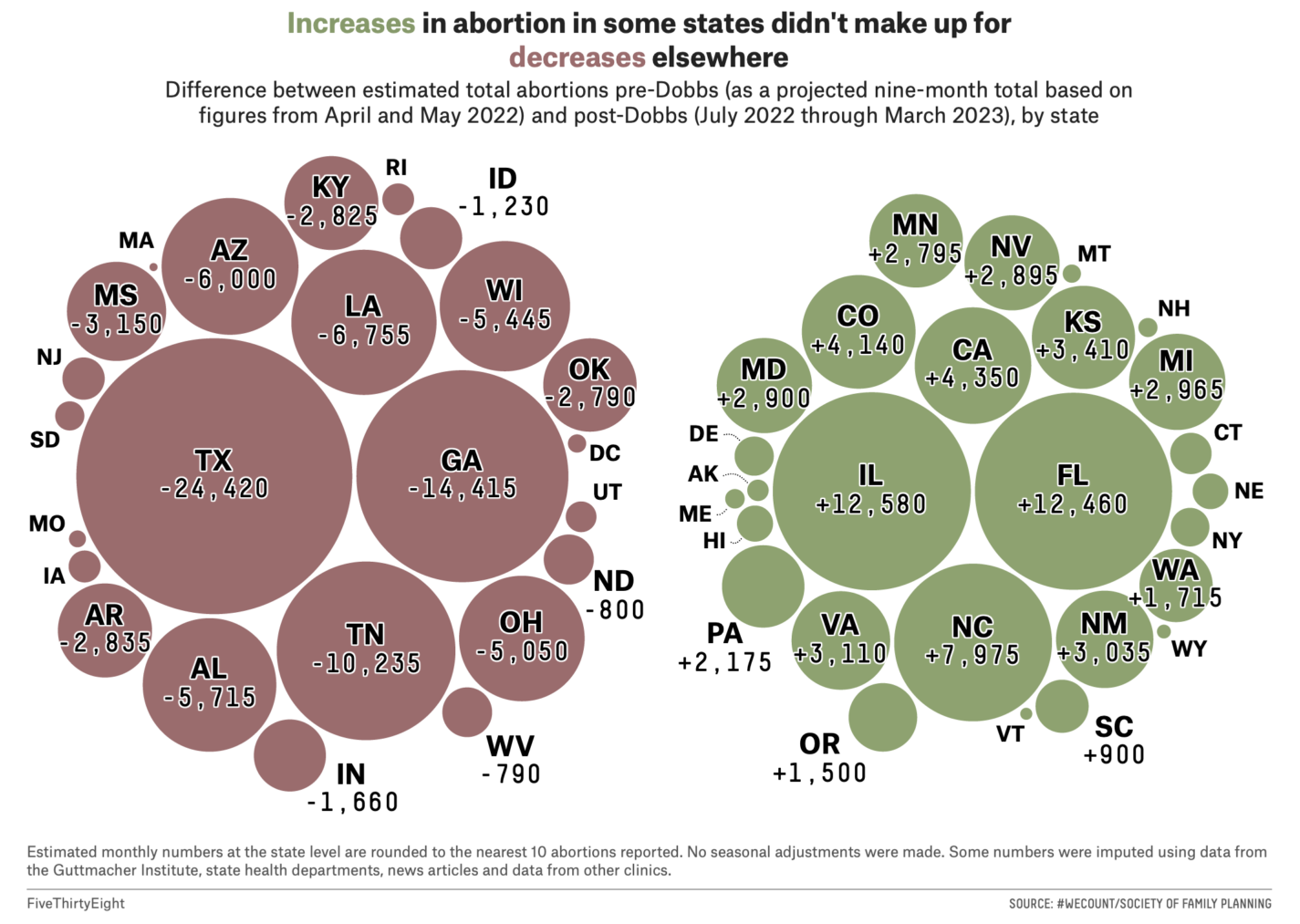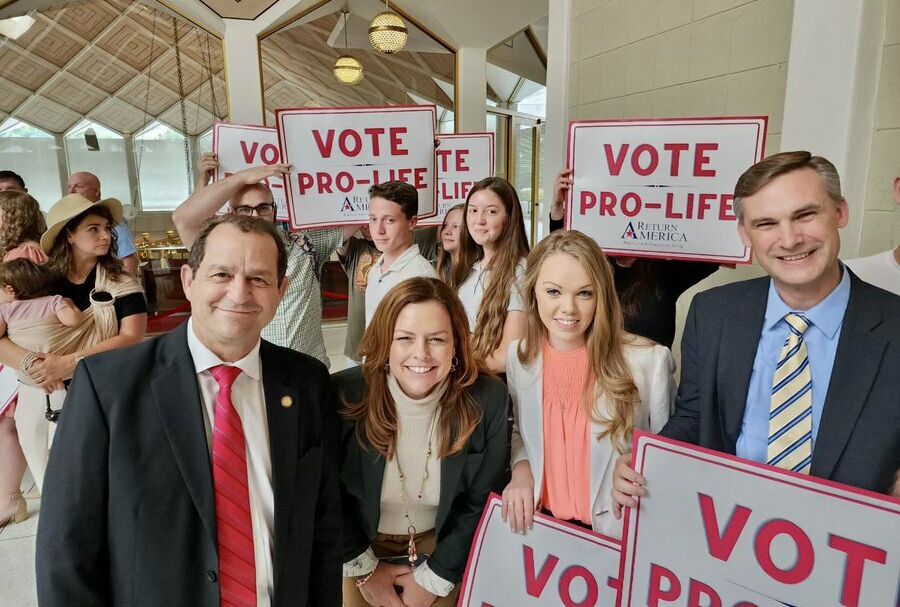North Carolina experienced a significant increase in the number of abortions performed following the recent Dobbs v. Jackson Women’s Health Organization decision by the U.S. Supreme Court. The Tar Heel State saw an estimated 7,975 additional abortions during the nine month period after Dobbs, the third-highest increase in the country, according to an article from FiveThirtyEight.
Immediately following the Dobbs decision, a trigger law went into effect in North Carolina which reduced the time period for abortions from 24 weeks to 20 weeks.
The Dobbs decision, which upheld a 15-week abortion ban in Mississippi, overturned Roe v. Wade and Planned Parenthood v. Casey, allowing states to decide their own abortion policies without a federal floor.
Debate over abortion policy took North Carolina legislative races by storm in the 2022 election cycle, becoming a focal issue of many campaigns. The abortion issue went toe to toe even with economic issues like inflation, and Republican candidates took a variety of positions. Most Democrats said they wanted to keep North Carolina’s 20 week abortion law or liberalize it further.
Planned Parenthood, the largest abortion provider in the country, spent over $10 million in N.C. state legislative races over the last four election cycles.
According to estimates provided by #WeCount, a research project led by the Society of Family Planning, the period between July 2022 and March 2023 witnessed 24,290 fewer legal abortions nationally compared to the pre-Dobbs baseline.
In states where abortion has been banned or seen serious new restrictions, an estimated 93,575 fewer legal abortions occurred in the nine months following Dobbs. Conversely, states where abortion remained mostly available experienced a rise of 69,285 legal abortions during the same period, indicating that many individuals traveled within the country to obtain abortions.
The national abortion rate has been gradually rising since 2017, which may have contributed to the upward trend in abortions even amid the disruptions caused by the Dobbs ruling.

While some regions of the country, such as the Northeast and the Pacific Northwest, have experienced relatively minor changes in abortion rates, certain states adjacent to regions where abortion access is significantly limited have seen a substantial influx of patients. North Carolina, for instance, witnessed an additional 7,975 abortions, Florida recorded 12,460 and Illinois reported 12,580 additional abortions in the nine months after Dobbs.
State public health department data confirms an increase in out-of-state patients seeking abortions after the Dobbs ruling. Colorado saw a doubling of out-of-state patients from 14 percent in 2021 to 28 percent in 2022, with a significant portion coming from Texas. In Florida, the proportion of out-of-state residents obtaining abortions rose from 6 percent in 2021 to 9 percent in the first three months of 2023.
In North Carolina, new extended waiting periods, such as the 72-hour in-person requirement passed by state lawmakers, will likely reduce the number of abortions coming from out of state.

Looking ahead, North Carolina recently implemented new restrictions, banning elective abortions after 12 weeks. However, there are significant exceptions including those for rape, incest, life of the mother, and fetal abnormalities in the new law.
States that banned most abortions after the six-week mark saw their abortion numbers reduced by more than half.
FiveThirtyEight discovered a notably consistent drop in the number of abortions in four states—Texas, Georgia, South Carolina, and Ohio—following the implementation of six-week bans. In each state, there was a decline of 50 to 60 percent in the number of abortions within the two months after the ban took effect, compared to the two months prior to its implementation.
In North Carolina, Senate Bill 20 mostly goes into effect on July 1, 2023 and will likely reduce the number of abortions in the state.